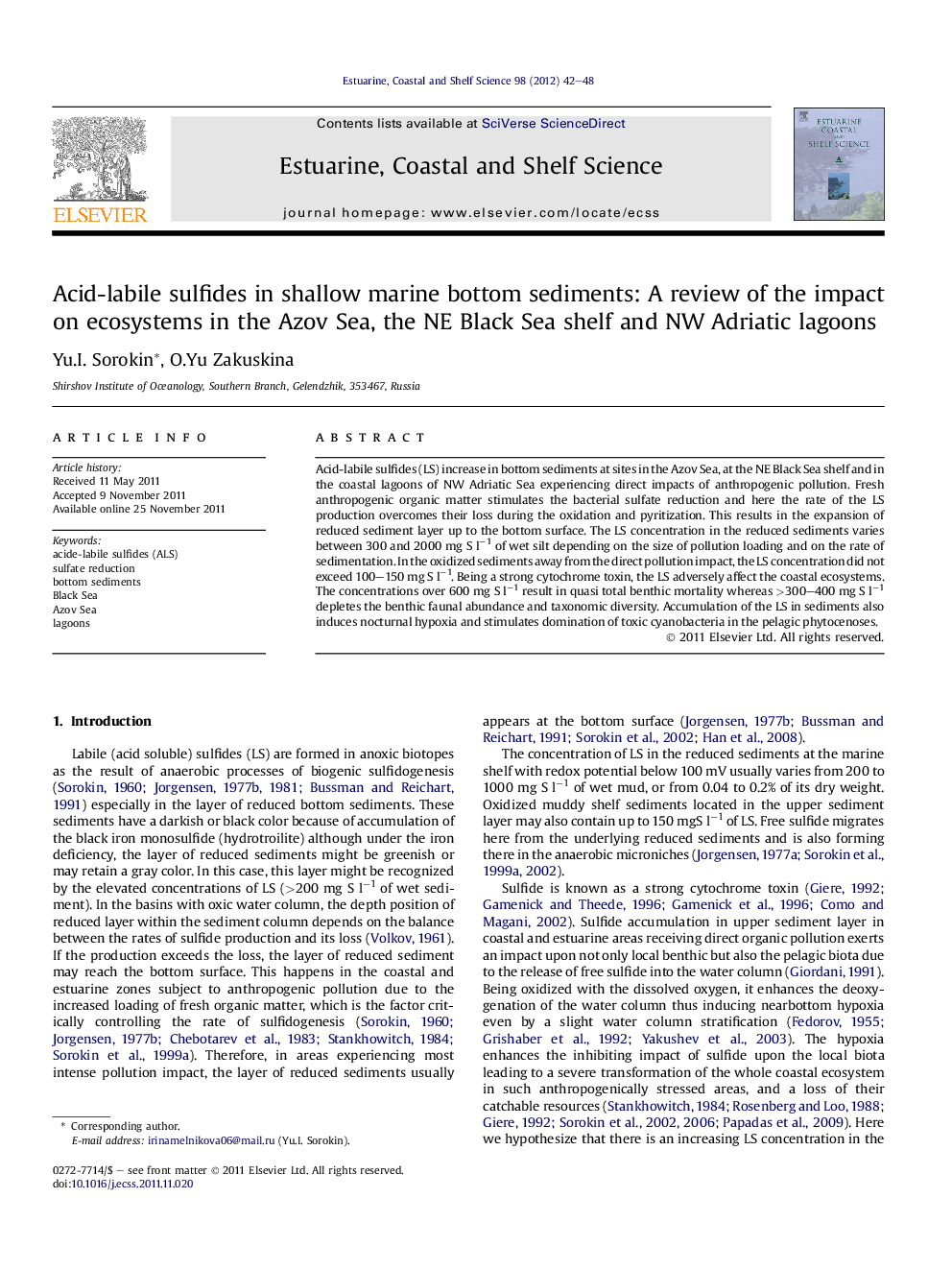| Article ID | Journal | Published Year | Pages | File Type |
|---|---|---|---|---|
| 4540325 | Estuarine, Coastal and Shelf Science | 2012 | 7 Pages |
Acid-labile sulfides (LS) increase in bottom sediments at sites in the Azov Sea, at the NE Black Sea shelf and in the coastal lagoons of NW Adriatic Sea experiencing direct impacts of anthropogenic pollution. Fresh anthropogenic organic matter stimulates the bacterial sulfate reduction and here the rate of the LS production overcomes their loss during the oxidation and pyritization. This results in the expansion of reduced sediment layer up to the bottom surface. The LS concentration in the reduced sediments varies between 300 and 2000 mg S l−1 of wet silt depending on the size of pollution loading and on the rate of sedimentation. In the oxidized sediments away from the direct pollution impact, the LS concentration did not exceed 100–150 mg S l−1. Being a strong cytochrome toxin, the LS adversely affect the coastal ecosystems. The concentrations over 600 mg S l−1 result in quasi total benthic mortality whereas >300–400 mg S l−1 depletes the benthic faunal abundance and taxonomic diversity. Accumulation of the LS in sediments also induces nocturnal hypoxia and stimulates domination of toxic cyanobacteria in the pelagic phytocenoses.
